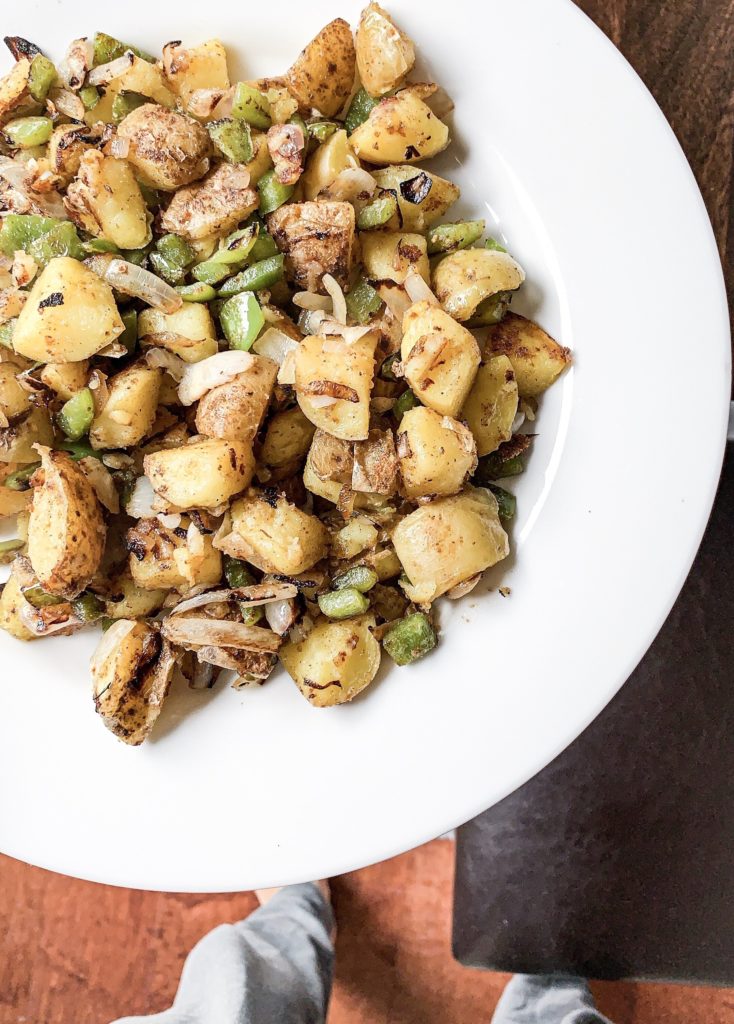December 26, 2019
Alison Tierney, MS, RD, CD, CSO
Alison is a registered dietitian, board-certified in oncology nutrition, and a cancer thriver. Her expertise in oncology nutrition and personal experience with her own cancer diagnosis and its treatment provide her with the unique perspective of being able to relate to her clients on an entirely different level. Her content is consistently focused on evidence-based guidelines and seeks to increase the awareness of the power of nutrition to complement traditional cancer therapies.
-
Alison Tierney, MS, RD, CD, CSOhttps://wholesomellc.com/author/alisonwholesomellc-com/
-
Alison Tierney, MS, RD, CD, CSOhttps://wholesomellc.com/author/alisonwholesomellc-com/
-
Alison Tierney, MS, RD, CD, CSOhttps://wholesomellc.com/author/alisonwholesomellc-com/
-
Alison Tierney, MS, RD, CD, CSOhttps://wholesomellc.com/author/alisonwholesomellc-com/
Why Potatoes Are a Nutritious Food
Potatoes are a staple in our household. Sweet, purple, blue, and gold. Any variety – you name it.
They are my 3-year-old daughter’s favorite food and has been since she started eating solid foods at 6-months old. Her first food was in fact a sweet potato (we used the baby-led weaning method).

When I told her we would have potatoes with dinner one time, she ran round the entire house for several minutes just yelling, “tatoes, tatoes, tatoes” — I was so happy I captured that memory on video.
It comes as no surprise to many that sweet potatoes are a healthy food. However, the russet or gold potatoes are commonly regarded as strictly unhealthy.
White Potatoes vs. White Flour: There’s a Big Difference
White potatoes, such as the russet, are commonly placed in the “white food category” that also includes white sugar and white flour and are told to be avoided like the plague. But before I dive into a little of the research regarding potatoes, let’s first think about it very simply to understand why they shouldn’t be added to the same category as sugar.

Once white flour has been put on the table (through white pasta, bread, etc.) it has already gone through quite the processing. In its whole food form, a wheat kernel has three main parts: bran, germ, and endosperm.
Bran: Contains the fiber, antioxidants, and B vitamins.
Germ: Contains B vitamins, protein, minerals, and a small amount of healthy fats.
Endosperm: Contains the starchy carbohydrates, protein, and small amounts of vitamins and minerals.
When the wheat kernel is processed into white flour, the bran and germ are completely removed leaving only the endosperm and leaving most of the valuable nutrients behind.
That means the fiber, antioxidants, the majority of B vitamins, and more are gone. How sad is that!?
When a potato comes to the table, let’s say in the form of a baked potato, it has simply been washed and cooked. Nothing removed. Nothing processed.
How can this food categorized the same as white flour and sugar? It can’t be.
And just because it’s white, doesn’t mean it isn’t nutritious. Think about cauliflower, which contains some of the best disease fighting nutrients around — and it’s white.
Nutrient Composition of a Potato
Potatoes get a bad reputation because of their white color. Most assume the color represents a lack of nutrients. Let’s analyze it.
1 small baked potato, with skin (138 grams or ~5 ounces)
Calories: 128
Fat: 0 g
Sodium: 13 mg
Potassium: 738 mg
Carbohydrates: 30 g
Fiber: 3 g
Protein: 3.5 g
Calcium: 20 mg
Iron: 1.5 mg
Beta Carotene: 10 mcg
*Nutrient Analysis from USDA Database, Retrieved December 2019
This white potato is relatively low in calories (remember this is 5 ounces of cooked potato!), naturally fat-free, provides a moderate amount of fiber, and kills it in the potassium department!
Sure, it’s not killing it in the antioxidant department (specifically beta carotene like a sweet potato), but it doesn’t deserve the bad reputation it has been given.
When do white potatoes become a food we want to limit in our diet? When we deep fry them, douse them in oil and/or butter, sour cream, cheese, and bacon. Not when they are in their whole food form coupled with highly nutritious foods (i.e., broccoli).
Furthermore, researchers decided to study the satiating (or the feeling of being full or satisfied) effects of several dozen foods. In the foods tested, the most satiating food was boiled potato.1 The simple, white potato was found to stop hunger in its tracks, for the same number of calories, than any other food they tested.
When we achieve satiety, we are more likely to eat intuitively, focus on disease fighting foods, and achieve a healthy weight.
But isn’t a Sweet Potato Better?
Yes, of course! Sweet potatoes are actually one of the healthiest foods on the planet, and beats out the humble white or gold potato.
1 medium baked sweet potato, with skin (146 grams or ~5 ounces)
Calories: 130
Fat: 0 g
Sodium: 13 mg
Potassium: 688 mg
Carbohydrates: 30 g
Fiber: 5 g
Protein: 3 g
Calcium: 55 mg
Iron: 1 mg
Beta Carotene: 16,700 mcg
*Nutrient Analysis from USDA Database, Retrieved December 2019
When comparing the nutrient analysis of a white versus sweet potato, you’ll notice they are very similar across the board with the exception of beta carotene (10 vs. 16,700 mcg). This is pretty common knowledge too.
What isn’t common knowledge is that research has identified a specific protein found in sweet potatoes — called the sweet potato protein (SPP) — that may be cancer fighting.2
This protein was tested against tongue cancer and was found to quickly reduce cancer’s ability to grow.3 #nutritionwin
When sweet potatoes were studied in metastatic cervical cancer patients, research found the SPP can actually be absorbed into the bloodstream in tact, survive digestion, and may have anti-metastatic activity (meaning it prevents the spread of cancer cells).4
Further research in colon cancer found SPP has the ability to slow the growth of colon cancer cells and decrease cancer cell migration and invasion.5
#takethatcancer

What About Other Colored Potatoes?
It is true that colored potatoes (e.g. purple and blue) and sweet potatoes contain more beneficial nutrients than the plain ol’ white potato.
In fact, research found that purple potatoes significantly decreased inflammation (as measured by C-Reactive Protein) and increased the blood’s antioxidant capacity in comparison to both russet and gold potatoes.6
What does ‘antioxidant capacity’ mean? Essentially the body’s ability to use antioxidants to reduce inflammation and fight disease!
What’s the Take Away?
White and gold potatoes don’t deserve to be placed in the same “avoid category” of foods such as white sugar and white flour. However, in the end, if you have the choice between a colored potato or a russet potato, choose the colored to increase your disease fighting potential. But, if you only have the choice of a russet or buttery gold potato, enjoy it!
What is your favorite disease-fighting way to include potatoes into your diet? Let us know in the comments below!
Wondering about the topic of carbohydrates, sugar and cancer? Check out our blog post, “Does Sugar Feed Cancer?
References:
Potatoes or No Potatoes?
Wholesome
About Alison
Courses & Programs
The Wholesome Journey
Free Resources
Join the Email List
Ready for knowledge and empowerment for your own Wholesome journey? Join my email list!
FAQs
Press & Media
Recipes
Blog
Subscribe
Contact Us